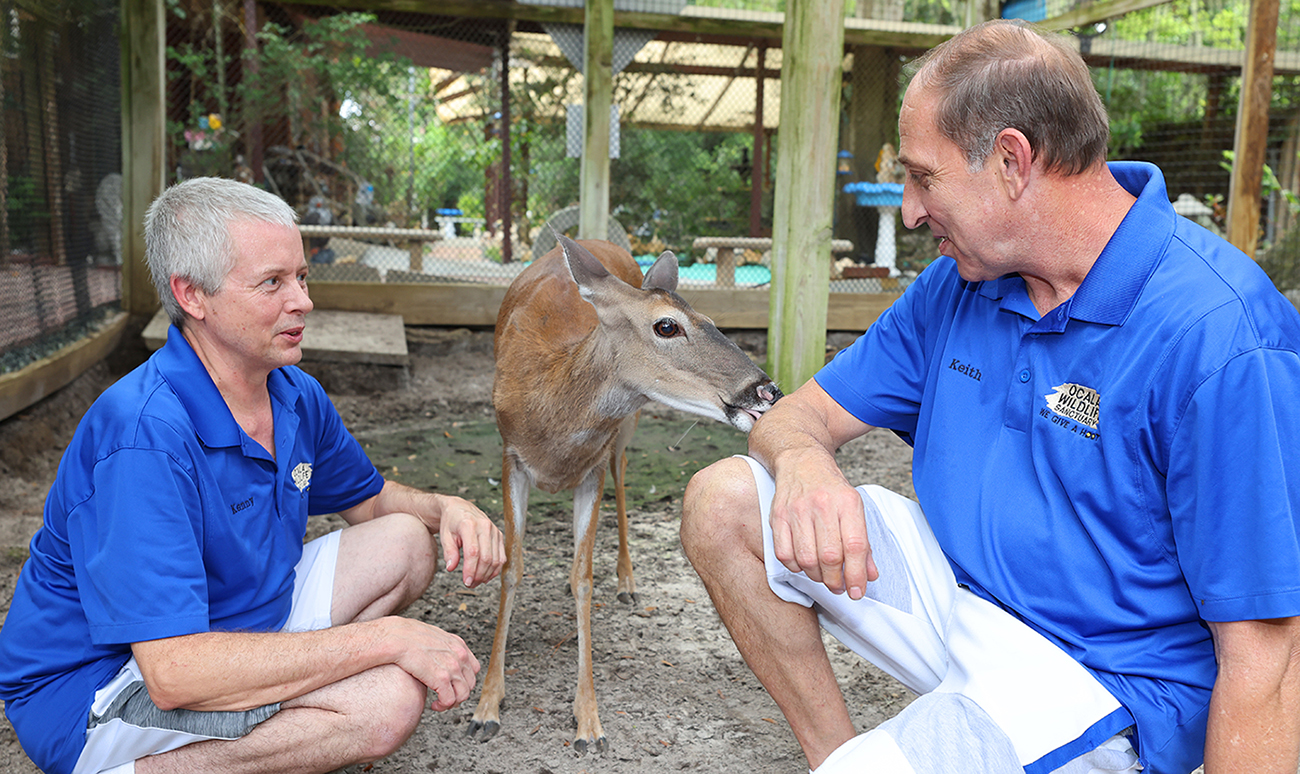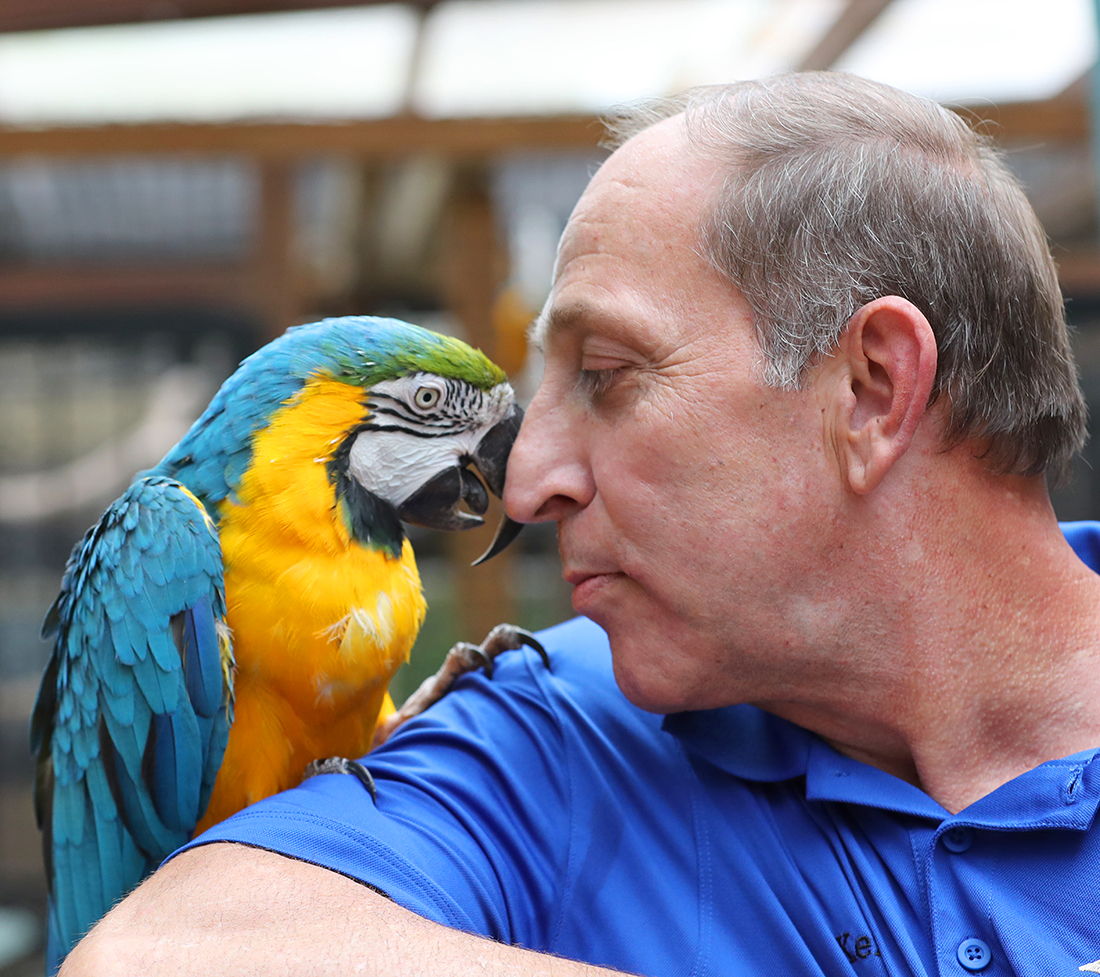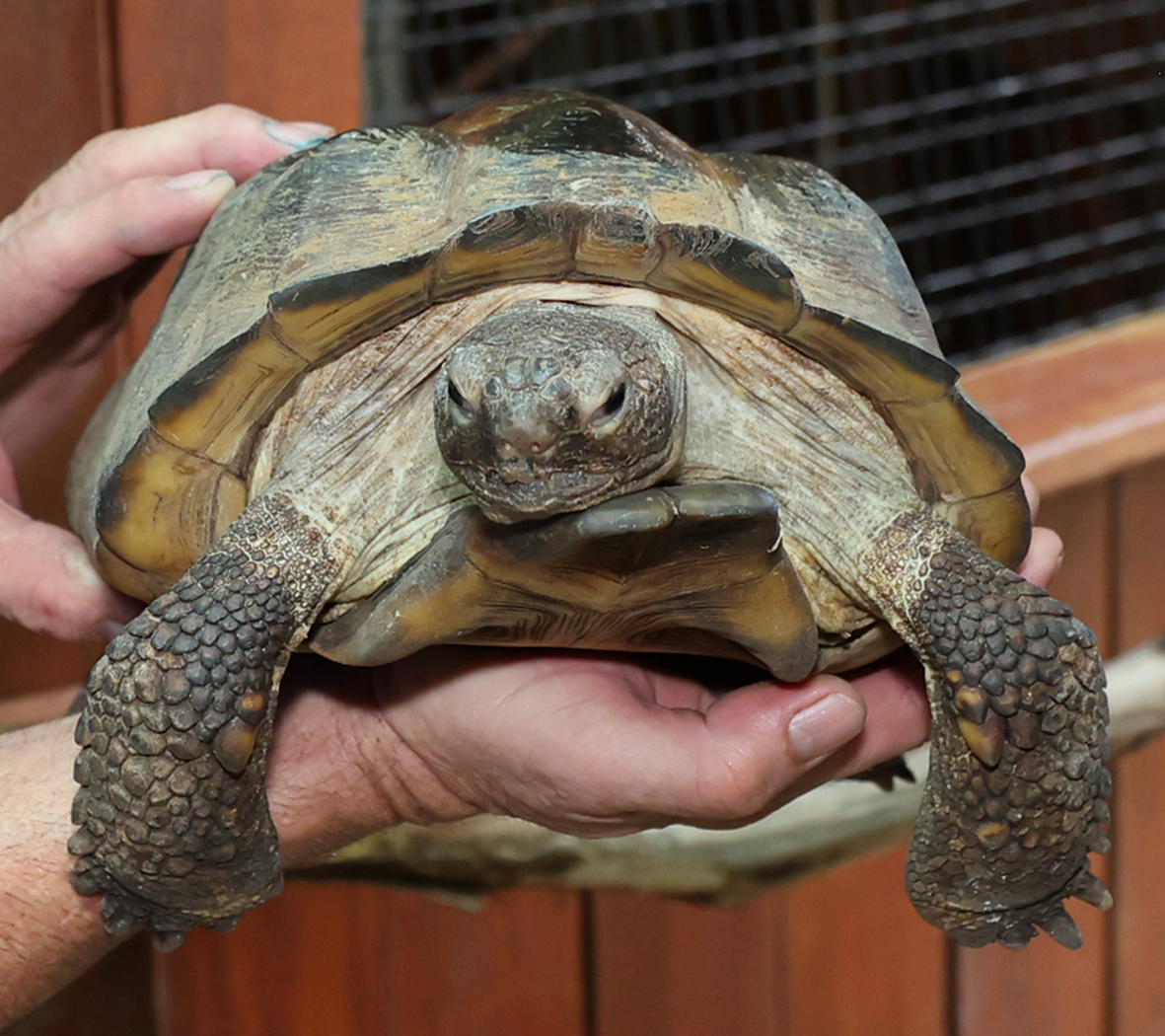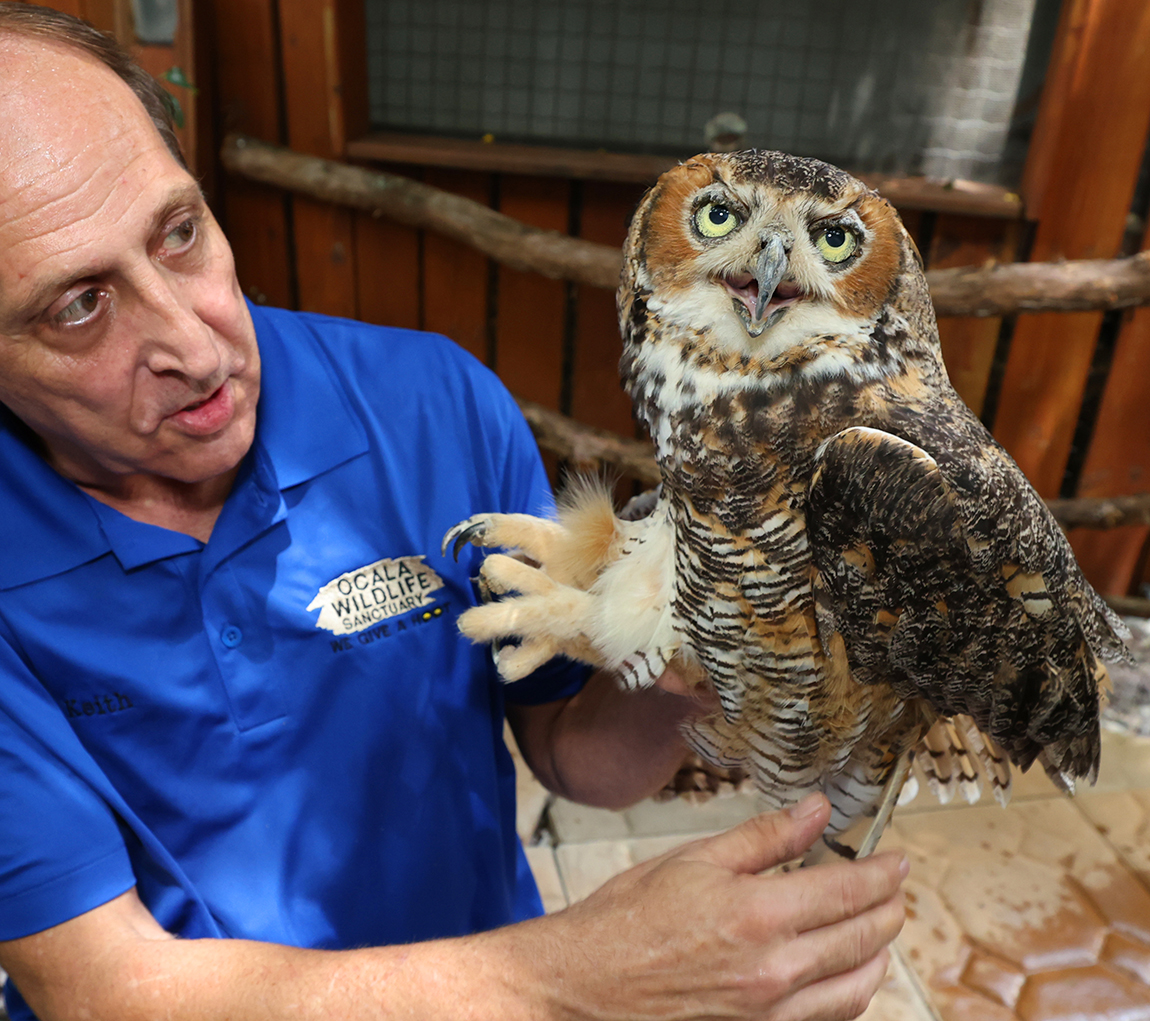The rescued animals at the Ocala Wildlife Sanctuary sometimes are the ones helping the humans.

Hobie is the oldest resident of the Ocala Wildlife Sanctuary, also known as OWLS. The great horned owl once was considered a “tiger of the skies,” given her ability to exert more than 500 pounds of pressure per inch, which meant she held more power in her talons than an eagle. That was until she was caught in a trap and someone chopped off her left wing with a machete.
Hobie, who is approximately 28 years old, was rescued 20 years ago by OWLS founder and president Keith Belisle. OWLS gained 501(c)(3) nonprofit status in 2005 but taking care of animals has been part of Belisle’s heritage for centuries. He is a Sault Ste. Marie Tribe of Chippewa Native American and says taking care of animals is in his blood.
“When you take something, you give something,” he says. “Part of my outlook on the animals is that humans are the cause of a lot of the injuries to wildlife, unfortunately, so if we’re taking their freedom from them, it’s only right to give them a permanent life.”
Kenneth Lane has been helping Belisle rehabilitate animals for more than 18 years. The two have rescued and provided a home for numerous animals that otherwise would have been euthanized or left to die in the wild.
“We’re set up as a citizen rescue education center, so we get calls from the local law enforcement, animal controls all over the state of Florida and the U.S Fish and Wildlife Service,” Belisle notes.
The sanctuary is currently home to around 75 animals, 80 percent of which are birds.
Because of Belisle’s ancestry and the Sault Ste. Marie Chippewa’s status as a bloodline tribe, he is allowed to house more than two species of birds of prey since they are considered religious icons. This exception permits OWLS to offer homes to disabled birds that would otherwise have to be sent to another sanctuary or be put down due to federal restrictions.
The sanctuary features three houses on one acre, with large, spacious cages surrounding the buildings. The size of the cages varies per species and number of occupants, and they are outrigged to maximize freedom as Belisle’s top priority is the animals’ comfort and health.
“Our goal is always to provide top-notch care for the animals,” he offers. “They deserve the best home, and that’s what they’re getting here.”
The animals range from owls, parrots and macaws to box turtles, feral cats and a deer named Buttercup, who plays a unique role at the sanctuary.
“A lot of our animals are disabled for one reason or another, so it does help the calmness effect of some kids who’ve been through trauma,” Belisle shares, adding that while many of the animal encounters are therapeutic for the kids, Buttercup actually identifies kids who have been abused.
“When we have groups of kids here that are less fortunate, she can identify a kid that’s been through severe trauma—whether its emotional or physical,” he explains. “It’s nothing we’ve trained her to do. She goes back to the person.”
He recalls a poignant time when a 7-year-old girl visited the sanctuary and it was her first time experiencing any animal encounters.
“Halfway through, we learned that this girl was 100 percent blind,” Belisle continues. “When we ended up back at the front of the tour … because their senses are greater, she could tell in what direction Buttercup was, and she was in a little stroller and started walking towards Buttercup.”
Buttercup is USDA certified for emotional support, so OWLS was able to make an exception and allow the little girl to touch the deer and experience what that felt like.
Hobie also is a therapeutic presence for many abused kids. Due to federal restrictions, no one can touch birds of prey, but Belisle will let children stroke a feather shed by Hobie while they are close to her cage.
“There are some kids who are disabled and they’ve kind of related to Hobie in what happened to her and the way they are,” he says. “It kind of helps them heal.”
The Ocala Wildlife Sanctuary offers free educational programs for groups such as 4-H clubs, schools and homeschool groups, and others.
OWLS exists solely through donations. As the number of volunteers dwindled during the pandemic, enlisting new ones—and obtaining financial support—are the sanctuary’s greatest needs. OS
To learn more, go to ocalawildlifesanctuary.org.
“Halfway through, we learned that this girl was 100 percent blind,” Belisle continues. “When we ended up back at the front of the tour … because their senses are greater, she could tell in what direction Buttercup was, and she was in a little stroller and started walking towards Buttercup.”
Buttercup is USDA certified for emotional support, so OWLS was able to make an exception and allow the little girl to touch the deer and experience what that felt like.



Hobie also is a therapeutic presence for many abused kids. Due to federal restrictions, no one can touch birds of prey, but Belisle will let children stroke a feather shed by Hobie while they are close to her cage.
“There are some kids who are disabled and they’ve kind of related to Hobie in what happened to her and the way they are,” he says. “It kind of helps them heal.”
The Ocala Wildlife Sanctuary offers free educational programs for groups such as 4-H clubs, schools and homeschool groups, and others.
OWLS exists solely through donations. As the number of volunteers dwindled during the pandemic, enlisting new ones—and obtaining financial support—are the sanctuary’s greatest needs. OS
To learn more, go to ocalawildlifesanctuary.org.






